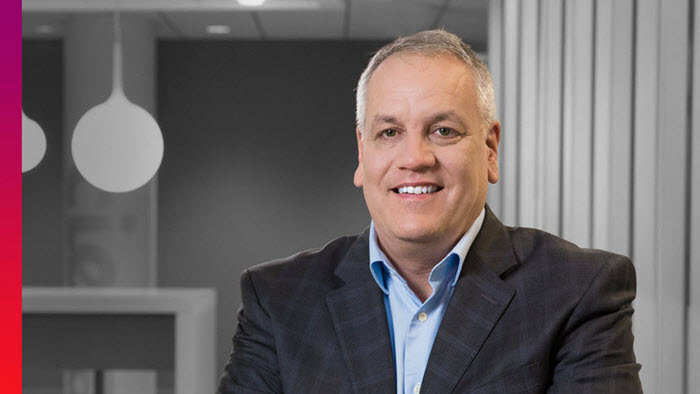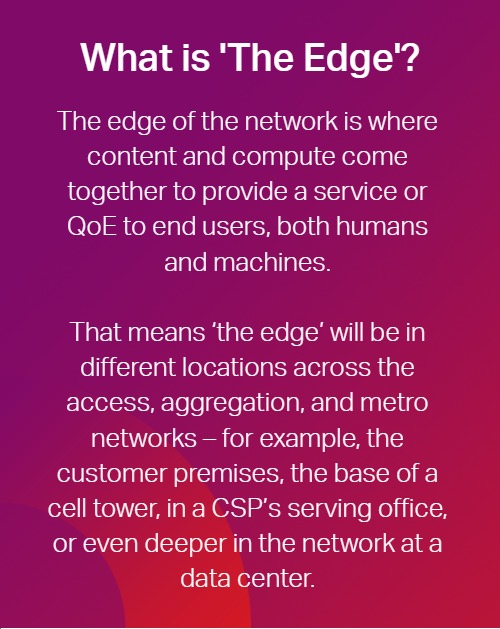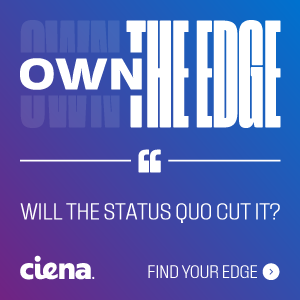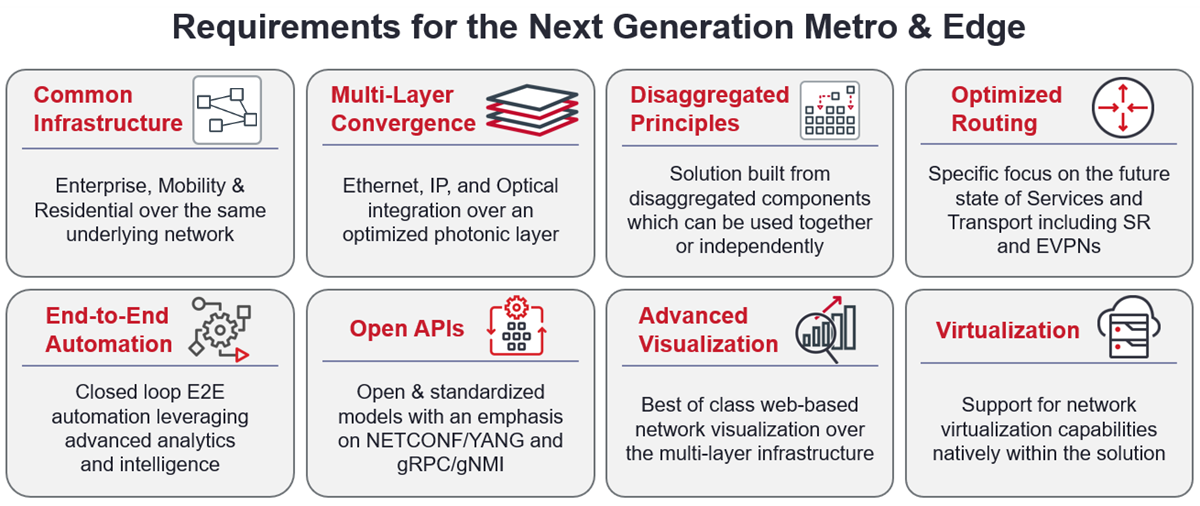Break away from the pack: How service providers can win by owning the edge
 Scott McFeely is SVP of Global Products and Services at Ciena, responsible for leading the company’s R&D, product line management, supply chain operations, and global network integration functions.
Scott McFeely is SVP of Global Products and Services at Ciena, responsible for leading the company’s R&D, product line management, supply chain operations, and global network integration functions.
This week marks the return of one of the greatest endurance competitions in sports, the Tour de France. The strategy of cycling has always fascinated me, with long stretches where the majority of cyclers are grouped up in the peloton waiting for the perfect time to strike. Break away too early and the pack may catch back up to you before the finish line. Break too late and your competition may pull too far ahead.
Today’s communications service providers (CSPs) find themselves in a similar situation. After many years of working towards a more converged and automated network infrastructure, the finish line is now in view. And in fact, the finish line has moved closer – whether CSPs are ready for it or not. With the onset of new technologies including 5G, edge cloud, IP/optical convergence, and automation, the time to make a sprint to the finish line is now!
But to get there they need to conquer the next key stage of this endurance race: the next-generation metro and edge network. While these networks are traditional strongholds for CSPs with their expansive number of on-net assets and broad access networks – both wireless and wireline – new pressures and dynamics are forcing CSPs to rethink these network architectures.
If CSPs want to truly own the edge, the time to break away from the pack is now.
I recently gathered with a group of Ciena leaders to discuss the challenges CSPs face in “owning the edge” and how Ciena is helping our CSP customers compete and win in this new battleground.
The first item up for discussion was the challenges that are driving so many CSPs to zero in on the next-gen metro and edge as a critical point of focus:
Jason is right, we are seeing a surge of new services, content, and applications being created and consumed at the edge of the network by both business and residential consumers. One of the knock-on effects is that CSPs must find a way to more rapidly and cost-effectively scale their metro networks to address surges in bandwidth demand and – critically – deliver a faster time-to-market for new services.
 They must win with business services, where their dominant share of on-net enterprise buildings gives them an open door to the booming cloud services market, but only if they can provide the simple and automated experience for end-users, both humans and machines, that their customers now demand.
They must win with business services, where their dominant share of on-net enterprise buildings gives them an open door to the booming cloud services market, but only if they can provide the simple and automated experience for end-users, both humans and machines, that their customers now demand.- They must scale for 5G, which promises to bring exponential growth in mobile xHaul traffic. But 5G also unlocks new service and application opportunities due to its unique high-capacity, low-latency, and guaranteed end-to-end performance capabilities.
- They must accommodate a suddenly transformed residential access market, where we are all experiencing what could best be defined as the “biggest work-from-home experiment ever”, where our homes have become the new branch office.
- They must build out a more expansive edge cloud strategy that converts their existing central office and cable headends into edge data centers. This moves resources closer to the edge of the network, where content is created and consumed, to meet the expected Service Level Agreements (SLAs) of next-gen apps and services.
All of this traffic needs to run across edge and metro networks, and the highly dynamic nature of these services requires a new way of thinking. There are significant space and power limitations at the edge, necessitating a flatter network infrastructure model with less equipment. Data-driven automation and a more holistic, real-time, multi-layer view of the network is needed to optimize utilization of network and cloud resources.
Getting to the end state of next-gen metro and edge is a marriage of easing pain points and embracing opportunities. If you step back and define what is required to build the world's best Adaptive NetworkTM to address the services and edge opportunities that we started this conversation with, it comes down to an important set of concepts and technologies, as outlined in the figure below.
In my conversations with CSPs, most of these requirements are already top of mind in their vision of a future state of their network. But the finish line is approaching fast, and finishing last is simply not an option. That’s where a true partner comes into play.
“Modernizing these networks to take advantage of new opportunities is extremely daunting. In some cases, it's lack of the skillsets and expertise to navigate to the new technologies and in other cases it's just the question of where they begin,” said Ricardo Warfield, Ciena’s VP of Global Services. “This is not about generic consulting or deployment of the initial network, this is truly developing a multi-year migration and transformation strategy, and that requires a level of thought and consulting that is not typical in normal professional services.”
The debate over IP/Optical convergence
One approach to more effectively supporting new dynamic traffic patterns and use cases is to converge network layers. There is a growing desire to achieve a converged IP/Optical end state that is simple, agile, and cost-effective, with the ability to easily scale to support exponential increases in service endpoints and bandwidth demand.
 For some, the topic of IP/Optical convergence begins and ends with pluggable optics in routers. But WDM pluggables for routers have been available for decades – the fact that coherent optics are coming available in that form-factor should not be a surprise to anyone.
For some, the topic of IP/Optical convergence begins and ends with pluggable optics in routers. But WDM pluggables for routers have been available for decades – the fact that coherent optics are coming available in that form-factor should not be a surprise to anyone.
The reality is that there is no one-size-fits-all way to achieve this end state, so IP/Optical convergence must be about more than just pluggables.
Our approach leverages Ciena’s Adaptive IPTM to provide an automated, open, and lean way of delivering IP differently from access to metro – alongside use-case optimized coherent optics right-sized for specific network applications. Our intelligent, self-configurable photonic underlay enables flexible management of IP traffic flows while Ciena’s MCP provides intelligent network control, simplifying and automating multi-layer, multi-vendor operations through a single pane of glass.
But there is a lot to consider when determining the right IP/Optical convergence strategy. “Business models are driving whether or not it makes sense to actually converge the hardware, and it really depends on where you are in the network, what type of traffic you're trying to serve, how much capacity you're trying to provide, whether those economics pan out or not,” Jason explains.
Service Lifecycle Automation as a Competitive Necessity
The opportunity at the next-gen metro and edge is not for CSPs alone, they face mounting challenges from competitive cloud service providers that have taken the early lead in transforming the customer experience. The answer to this competitive threat is a clear and immediate need for better automation:
Of course, automation can mean many things to many people. It’s not just automation on the back-end that is necessary, it’s also a complete rethinking of the user experience that is required.
“Customers want a digital experience on the front end, they want to be able to order things like you do in a cloud environment,” said Rick. “You then have to create services that can adapt to the changes [and requests] at that digital front end, and then you need to be able to pass it off to the infrastructure to execute those changes or those requests in a highly automated way.”
So why is Ciena the partner to help CSPs break away from the pack and win the mad dash to the next-gen metro and edge finish line?
Well I’ll give you my answer. I think about what our customers look for in a network solutions partner that can help them own the edge:
- They want someone who provides a range of coherent optics solutions for different performance and deployment scenarios.
- They want someone who is capable of delivering a next generation IP experience, and not be burdened with legacy technology approaches.
- They want someone that has intelligent photonic capability.
- They want someone who brings the tools and know-how to be able to manage their network assets across multiple network layers.
- And sometimes just getting started is the hardest part. They need someone with the professional services expertise to help them determine the right strategy forward and see their transformation through to completion.
But most importantly, I think – in fact I know – they need a trusted partner, someone they can count on that has proven ability to help them navigate these network evolutions. If I think about the folks in the world that tick all those boxes, there's a very short list and I like to think that Ciena is at the top.
Winning races isn’t always about iterating on the past, sometimes it’s about reimagining your approach. We believe the time is now to break away from the pack and Own the Edge. Ciena can help – we’re excited to team up and ride this race alongside you.
To dig deeper into the topic, download our CSP Guide to Next-Gen Metro and Edge Networks, or read more about next-gen metro and edge to see how today’s pain points become tomorrow’s opportunities.












